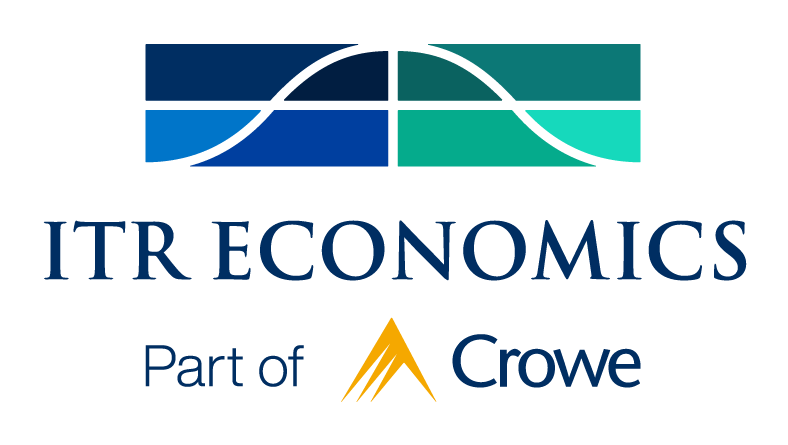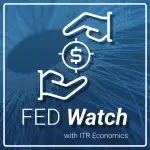WEEKLY FED WATCH
This week on Fed Watch, ITR Economics Consulting Principal and Chief Economist Brian Beaulieu highlights the latest economic data and delves into why the Federal Reserve is pausing interest rate cuts. Tune in to the full episode to uncover the key factors driving these decisions!
Key Episode Takeaways
- 0:22 – Federal Reserve interest rate decisions and economic indicators
- 0:51 – Inflation data and Consumer Price Index analysis
- 2:20 – Core inflation data and consumer spending trends
- 3:09 – Producer Price Index and Retail Sales data analysis
- 5:17 – Reviewing interest rates and 10-year bond yield
- 6:34 – Impact of the tariffs on inflation and future outlook
The below transcript is a literal translation of the podcast audio that has been machine generated by Notta.
Hello. Thanks for joining us for this edition of Fed Watch. I’m Brian Beaulieu, Chief Economist of ITR Economics, and today is February 14th, 2025.
Earlier this week, the Fed indicated that they’re at least taking a pause on lowering interest rates, and they did so with really good reason. Things are going to have to fall apart within the economy if they’re going to lower the Fed funds rate anymore, in our opinion. We’re probably done. We had been holding out hope that they would do some more, but we’re going to look at some numbers that suggest that there’s just no maneuvering room for the Federal Reserve to be doing that.
CPI data came out yesterday, and that shows that the all items number is up to 3.0%, and it’s been rising. It’s the fourth consecutive month that inflation is going in the wrong direction. That’s got to give the Fed some pause. Food at home is only 1.9%, so that sounds benign, but it’s rising from 0.9% in August. We’re going to continue to watch that number very carefully because we’re reading, I’m sure you are also, how there’s labor situations forming in the agricultural industry, people going back home or at least staying at home here in the United States rather than showing up for work for fear of being deported. We’re going to be keeping a close eye to watch on what that means for food prices. Food away from home is up 3.4%. That’s probably a labor issue more than a food issue per se.
Natural gas piped into the home as a source for heating the home is up 4.9% cooling the home too, I suppose. We saw a smart prices spike as well. So it’s not just a fluke in the last month, we have seen natural gas prices go up significantly and there are cause and effect reasons for that. Our point here is those prices aren’t likely to come back down.
Core inflation seems to be running at 3.3% and it’s stuck there. Again, the Fed at one time, that could be 2.0. We thought maybe they could get it to 2.5, 2.7, but it seems to be stuck at 3.3.
Insurances, vehicle repairs, veterinarian services are all showing more than a 6.5% year-over-year increase in price. So we’re continuing to see a squeeze on discretionary income after tax income adjusted for inflation is going up, but not as fast as 6.5%. So consumers are feeling a drain in what they can do with their money. That’s gonna keep this recovery slow, we think, slower than what we would normally expect in line with what we are forecasting.
The PPI came out also earlier this week, and that shows that there’s not gonna be any relief in the consumer price index. The final demand goods and services producer price index was up 3.5%, so that’s higher than the CPI. That means there’s gonna be upward pressure on the CPI. And the core producer price index, similar to the CPI, except it breaks out trade also, is running at 3.4%. It’s been running 3.4 to 3.5 for, well, since May, 2024. So we’re not getting any relief in these core price indexes, so it’s no wonder that the Federal Reserve is calling it quits.
And when we look a little further into the future, we look at unprocessed goods for intermediate demand, and that 1/12, and it’s goods now, not just services, goods alone soared to 8.7% rate of inflation. So there’s more inflation behind the wall, making its way into the consumer place. Didn’t hurt retail sales.
Retail sales were good in January. We had a 3/12 move up in phase B at 4.4%. 12/12 is moving up to 3.8%. It is also in phase B. That’s a sign that the economy is going to continue to chug along, and it’s getting stronger, not weaker. So again, the Fed’s going to look at that and say, yeah, we did the right thing not to lower those interest rates. The economy doesn’t need us to.
Total industrial production came out this morning. January number was strong. We saw our improvement in the 3/12 rate of change because January and December combined were both so strong. I’m not sure they’re not gonna get revised down a little bit, but it’s a flat trend leaning towards some ascent. So for people who are hoping for lower interest rates, all of this is really bad news on that side. We need to just contend with the fact that these are the interest rates for now and the next trend is gonna be one of rise.
The 10-year bond yield just edged up about one basis point. It was really no big deal. It’s at 4.463% from where we were last week. Freddie Mac is up about 10 basis points in terms of its 30-year fixed rate mortgage. That’s still below seven, fortunately, at 6.87. But as we’ve been saying, that’s not going much of any place either.
Then there’s all this… tariff activity that is going to be fueling these inflationary fires. Further evidence that we’re not going to be looking at interest rates decline. Please don’t assume that because there’s a 25% tariff on it, aluminum is going to go up 25%. It’s muted, but there will be the inevitable price increases. If you’re importing steel and it’s a unique steel, no substitute in the US, you are going to get here with that 25% and you’re going to have to pass it along to the consumer. There are substitute goods because imports aren’t 100% of any source that we’re getting essentially. It gets dialed back in terms of its impact on inflation, but it’s going to have an impact nonetheless.
We’re going to talk about those issues and so much more at our March 20th virtual summit that we’re holding in conjunction with the experts at Crowe in terms of supply chain taxes. I’m going to be presenting a global outlook on the 2030s, what it’s going to look like, who’s going to get hit hard, who’s going to be okay, relatively speaking. We know what to expect, where the pressure points are going to be and where the flashpoints might be. There’s a lot going on right now. This is anything but a boring time to be around as an economist, so stay tuned. We’ll keep you up to date. Thanks for watching us for this edition of Fed Watch.


